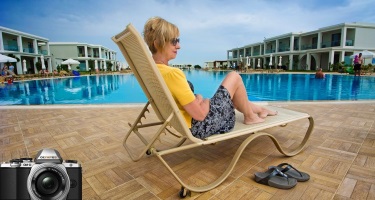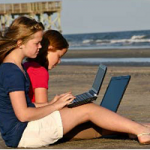Photography – Become a Better Photographer – Part II

About This Course
‘Probably the best course I have taken on Udemy and great fun ‘ – Diane (enrolled in over a dozen other photography courses)
A set of over 50 video tutorials of photography tips and tricks, each one demonstrates one specific DSLR or compact camera photography tip. This course is aimed at amateur photographers from beginners through to enthusiasts.
- Photography training that works
- See immediate improvements in your photos
- Easy to follow and understand, with a fun teaching style
- All boring bits removed (well, most of them anyway!)
Just kicked myself, that is a brilliant tip, how did I not think of it? These videos are brilliant!’ – Wilfie
Bernie is so easy to listen to. This is by far the best course I have come across. Lovely quick videos that explain everything. Can not recommend it highly enough. Love it, love it, love it! – Patricia
These DSLR photography tips for beginners deal with a wide range of subjects and surprisingly, some of the more powerful tips are completely non-technical in nature. There are several FREE photography training videos that you can try out first, watch them and see for yourself just how good some of these DSLR photography tips and tricks are.
Here are some of the general topics covered in this course:-
- Understand the ‘Exposure Triangle’ and get out of the Auto mode.
- Get incredible natural portrait lighting with this one simple pro tip that will flatter your subjects
- Get sharper images with better focussing technique and use of shutter speeds
- Working with natural light and dealing with the sun
- How understanding the direction of light can dramatically improve your photos
- How to use composition to take more dramatic and creative images
- Flatter your family and friends with some great posing tips (individual and group posing)
- How to improve your flash photography
- Controlling depth of field and the ‘block of focus’
- How to get blue skies in your photos instead of washed out white skies
- How to take better photos in the snow
- How to avoid camera shake and get sharper images
- How to take photos of fireworks
- The myth of megapixels and image quality
- Digital cameras and their settings
- …. and many more!
What are the requirements?
- Any type of camera will be suitable for this course. Some lectures covering the same topic are duplicated so that they can be DSLR or compact camera specific.
- Even though nearly all the tips are easy, as with any other skill, the more you practise the better you’ll become!
- Enthusiasm always helps!
What am I going to get from this course?
- To explain camera settings
- To demonstrate easy tips for getting sharp images
- To show how an understanding of light and composition is worth more to you than a whole bagful of camera accessories
- Raise awareness of the possibilities for taking great photos
- To demonstrate easy ways of taking amazing outdoor portraits
- To show some great ways of getting better landscape photos
- To provide tips on getting better flash photos indoors
- To show how to take better photos in specific environments (e.g snow, indoors by a window etc…)
- To help understand image quality, resolution and the different camera types
- To realise the great potential you have for becoming a great photographer
What is the target audience?
- Beginner amateur photographers
- Intermediate amateur photographers
Course Staff

Bernie Raffe AMPA
Award winning portrait & (ex) wedding photographer
Bernie is a professional photographer based in the UK, and has been passionate about photography ever since his parents bought him his first camera when he was just 11 years old (a Kodak Brownie 127)!
He’s qualified as a photographer to ‘Associate’ level with both the MPA (Master Photographers Association), and the SWPP (Society of Wedding and Portrait Photographers) in the UK.
Bernie loves sharing his passion for photography, and students really enjoy his fun teaching style which has earned him over 100 five star reviews. These entertaining and informative films will demonstrate, without blinding you with science, how you can be a better photographer, taking more creative and dramatic photos that will wow your friends and family.
He is in demand as a speaker to other professionals and to beginner and keen amateurs at camera clubs… he’s also an occasional guest speaker on cruise ships.
Frequently Asked Questions
What web browser should I use?
The EnlightMe platform works best with current versions of Chrome, Firefox or Safari, or with Internet Explorer version 9 and above.
Course Features
- Lectures 54
- Quizzes 0
- Duration 4 Hours/Week
- Skill level
- Language English
- Students 3
- Certificate No
- Assessments Self
-
Section 1: Beginner camera settings (important info used in subsequent lectures)
- Lecture 1.1 Lecture 1:Use the Exposure Triangle to understand exposure and get out of the Auto mode Locked
- Lecture 1.2 Lecture 2:The ISO setting, what is it and what’s it for? Locked
- Lecture 1.3 Lecture 3:Exposure Compensation, why you sometimes need to darken or lighten your images Locked
- Lecture 1.4 Lecture 4:Lens apertures, learn about one of the most important camera settings Locked
- Lecture 1.5 Lecture 5:How to turn your flash on / off, and why you should know how! Locked
-
Section 2: More advanced camera settings
- Lecture 2.1 Lecture 6:5 Tips for tack sharp focussing Locked
- Lecture 2.2 Lecture 7:Choose the right shutter speeds to avoid camera shake & get sharper photos Locked
- Lecture 2.3 Lecture 8:Use your histogram to nail the exposure for those important images. Locked
- Lecture 2.4 Lecture 9:Aperture & depth of field – start getting creative (DSLRs) Locked
- Lecture 2.5 Lecture 10:Scene modes & depth of field (Compact cameras) Locked
-
Section 3: Improve your images with natural lighting
- Lecture 3.1 Lecture 11:Top Shade, the professional’s portrait lighting secret Locked
- Lecture 3.2 Lecture 12:Dealing with the sun when taking a portrait Locked
- Lecture 3.3 Lecture 13:Direction of light and the effect it has on your photos Locked
- Lecture 3.4 Lecture 14:Get nice blue skies in your photos and avoid white skies Locked
- Lecture 3.5 Lecture 15:How to retain the ambient light of a nicely lit room Locked
- Lecture 3.6 Lecture 16:Better indoor portraits using window light – pt 1 of 2 Locked
- Lecture 3.7 Lecture 17:Better indoor portraits using window light – pt 2 of 2 Locked
- Lecture 3.8 Lecture 18:Create a great look using backlighting Locked
- Lecture 3.9 Lecture 19:How to improve your natural light portraits using a reflector Locked
-
Section 4: Improve your images using better composition
- Lecture 4.1 Lecture 20:Use the rule of thirds for improved composition Locked
- Lecture 4.2 Lecture 21:Better composition using diagonal lines Locked
- Lecture 4.3 Lecture 22:Use ‘Leading Lines’ to create more dramatic images Locked
- Lecture 4.4 Lecture 23:Use repeating patterns for more impact Locked
- Lecture 4.5 Lecture 24:Improve your composition using the ‘frame within a frame’ trick Locked
- Lecture 4.6 Lecture 25:Blur the background for more impact (DSLRs) Locked
- Lecture 4.7 Lecture 26:Blur the background to isolate your subject (Compact Cameras) Locked
- Lecture 4.8 Lecture 27:Don’t let cluttered backgrounds ruin your portraits Locked
- Lecture 4.9 Lecture 28:Improve your portraits using unusual backgrounds Locked
- Lecture 4.10 Lecture 29:Improve your portraits using nature’s own abstract backgrounds Locked
-
Section 5: Tips on posing for portraits
- Lecture 5.1 Lecture 30:Flatter your individual subject with these full length posing tips Locked
- Lecture 5.2 Lecture 31:Family or small group poses – Pt I Standing poses Locked
- Lecture 5.3 Lecture 32:Family or small group poses – Pt II Seated poses Locked
- Lecture 5.4 Lecture 33:Individual natural and relaxed female poses Locked
- Lecture 5.5 Lecture 34:Ideas for photographing children, 4-6 months old Locked
- Lecture 5.6 Lecture 35:Ideas for photographing children, 9-12 months old Locked
-
Section 6: Landscapes and scenery
- Lecture 6.1 Lecture 36:Landscape photography tips, a walkthough with Barbara Locked
- Lecture 6.2 Lecture 37:How to take better photos in the snow Locked
-
Section 7: Flash photography
- Lecture 7.1 Lecture 38:Better results using an external flashgun, Pt I – Bouncing the flash Locked
- Lecture 7.2 Lecture 39:Better flash portraits using an external flashgun, Pt II – More creative portraits Locked
- Lecture 7.3 Lecture 40:Better results using your cameras’ built-in flash – soften the shadows Locked
- Lecture 7.4 Lecture 41:Better results using on-board flash – get a more pleasing background Locked
-
Section 8: Information and tips on using lenses
- Lecture 8.1 Lecture 42:General tips on camera lenses, variable/fixed apertures, fast/slow, what are prime lenses? Locked
- Lecture 8.2 Lecture 43:Lens focal length, Pt I – Perspective Locked
- Lecture 8.3 Lecture 44:Lens focal length, Pt II – ‘Field of View’ Locked
- Lecture 8.4 Lecture 45:Lens focal length, Pt III – ‘Depth of Field’ Locked
-
Section 9: Other general techniques
- Lecture 9.1 Lecture 46:A neat idea for a fun, dramatic portrait Locked
- Lecture 9.2 Lecture 47:How the ‘half press of the shutter’ technique can improve your picture taking Locked
- Lecture 9.3 Lecture 48:How to easily create a stunning online slide show in minutes Locked
- Lecture 9.4 Lecture 49:How to take photos of fireworks Locked
- Lecture 9.5 Lecture 50:Use the fashion photographer’s perspective trick for longer legs Locked
-
Section 10: How to take a really flattering Profile or PR photo
- Lecture 10.1 Lecture 51:Take a more flattering PR or Profile photo – Basic technique using using ‘Top Shade’ Locked
- Lecture 10.2 Lecture 52:Take a more flattering Profile or PR photo – Refining the basic profile or PR image Locked
-
Section 11: Which digital camera to buy next, megapixels is not the answer.
- Lecture 11.1 Lecture 53:The myth of megapixels – image resolution and quality Locked
- Lecture 11.2 Lecture 54:Which camera should I buy next – there’s so many to choose from! Locked











